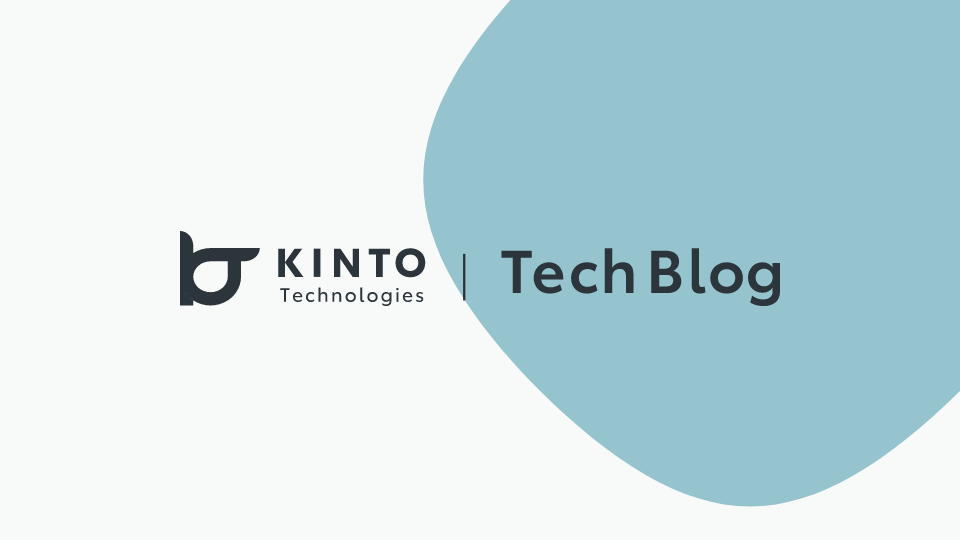Preparations for Our First KINTO Technologies MeetUp! – Leading Up to the Event

Introduction
Hello! I’m Kin-chan from the Development Support Division at KINTO Technologies.
It might seem sudden, but on Thursday, August 3rd, we’ll be hosting our very first KINTO Technologies MeetUp! - 4 Case Studies by and for Corporate IT Teams. This event will focus on the corporate IT domain and take the form of case study presentations followed by a roundtable discussion.
In this article, I’d like to share the behind-the-scenes story of how we got this study session off the ground. If you’re someone who’s thinking, "I want to start and lead a study session from scratch," I hope this will be helpful and encouraging.
What Comes to Mind When You Hear "Study Session"?
It might be a bit sudden, but what comes to mind when you hear the term "study session"?
- Listening to experts in your field and gaining new insights
- Getting together with others who share your interests to learn and grow together
- Joining as part of your job, perhaps even being expected to attend, in the name of team skill-building
- (Though less common during COVID) Participating mainly for the conversations and food at the social gatherings
As you can see, study sessions can serve many different purposes and come in many forms.
When I think about what a study session means to me, I’m reminded of a community I once helped organize called "DevLOVE."
- The concept behind it was to create a "learning space" where knowledge and experience could flow between the workplace and the outside world—to help move our teams and organizations forward.
Having always seen value in study groups and communities like this, I joined KINTO Technologies hoping to get involved in opportunities to share and learn within the company.
*I’ll go into more detail about how this mindset turned into concrete action in a future post in our "Agile Series."
Okay, Then Let's Have a Study Session
When I joined KINTO Technologies, I found that the company already had a strong culture of holding regular study sessions and offering many opportunities for learning. For example:
- Optional company-wide study sessions for engineers
- Business-focused sessions hosted by business divisions to deepen understanding of our operations
- Small group study sessions and book clubs organized within each product team
What impressed me most was the supportive culture that encouraged participation in study sessions and book clubs—both inside and outside the company—as part of regular work. There’s even a system in place that covers the cost of books needed for learning. It was clear to me that KINTO Technologies genuinely supports its employees' development.
In this environment, I started holding small study sessions and group reading sessions for my own team, spending my days learning alongside my colleagues. And somewhere in the back of my mind, I kept thinking, "I wish more people knew about this culture."
One day, a discussion came up in our team about how we could better recruit corporate engineers. As we explored various ideas, one thought kept coming back to me: "How can we showcase our strengths and this great culture to more people?" The challenge naturally connected with my earlier desire to share our company’s learning culture more widely.
As a result, we came up with the idea: "Why not hold a study session that includes people from outside the company?"
I Can't Do This Alone! Help Me Everyone!
With that spark, I quickly drafted a "Proposal for a Corporate IT Study Session" and shared it with our team leaders as a formal idea. Each leader gave it a "thumbs-up." That gave us a green light to move forward,
but saying "let's do it" was only the beginning. There was still a lot to figure out:
- What would the theme be? Who would present?
- Where would it take place? When should we hold it? What would the timetable look like?
It was clear that I couldn’t handle all this alone. So the following week, during the full team meeting, I made an announcement: "We’re going to hold a study session! We’re looking for members to join as organizers and speakers!"
In the end, a team of six was formed, including volunteers and recommended members!
We immediately created a dedicated channel on Slack and began communicating with all the relevant members. To make sure everyone was aligned on the goal, we kicked things off with an internal meeting for the organizing team. Since not everyone had been involved from the initial planning stage, we focused on a few key areas:
- What is the purpose of the event, and what will it look like?
- What is the goal state we’re aiming to reach?
- What has already been decided, and what still needs to be figured out to reach our goal?
- How will we resolve the unsolved issues?
We began by clearly aligning our "goals" and "understanding of the current status." Then, we set the "next milestone to aim for," and each member began preparations.
We Can't Do All by Ourselves!! We Need More Help!
The next step was for the organizing team to discuss the unresolved topics. We broke it down into five major areas:
- Content
- Format and equipment needs
- Date and timetable
- Promotion and outreach
- How to measure success
We held in-depth discussions to clarify each point.
As we worked through these, we identified what we could manage ourselves and what would require cooperation from other departments. Based on this, we began setting up meetings that included key stakeholders from other teams.
*Once the decision to hold the study session was made, our manager had already started reaching out to divisions that might be needed for support. Thanks to that early communication, we were able to smoothly hold a company-wide kickoff meeting.
Thankfully, many of the people who participated in the joint kickoff were very positive. In response to our ideas, they offered suggestions like, "How about trying this?" and "We’ve done something similar before, so it can be handled quickly." Their input helped us get closer to our goal.
We Need Flexible Yet Transparent Project Management!
As our plans became clearer, a number of concrete action items began to emerge in parallel.
We realized that if we simply relied on "whoever could handle it" to take things on as they came, it would be difficult to keep track of progress. In other words, transparency would suffer. To avoid that, we decided to define a certain level of visualizing, progress tracking, and role assignments.
- Visualizing
- We used Jira to make tasks visible and prioritize them in a structured way using the "Epic > Task" hierarchy
- Progress Management
- We set weekly goals at the Epic level.
- Each week, we reviewed our progress and adjusted course as needed. If all went well, we would then set the next goal.
- Division of Roles
- We assigned responsibility for each Epic.
- If someone was falling behind or having trouble reaching their weekly goal, others would step in to help.
This approach helped us achieve iterative, incremental progress in managing the organizing team.
[Side Note] How We Applied "Agile Kata" to Run the Organizing Team
As a quick aside, the way we approached organizing this event was inspired by the concept of the "Agile Kata," particularly its idea of "Improvement Kata." According to "Agile Kata," you can apply agile thinking in your daily work by repeating the following steps:
- Understand the direction and challenges
- Grasp the current situation
- Set the next target state
- Experiment toward that target in an iterative way
Even without relying on a fixed framework like Scrum, you can create an agile way of working simply by applying the Kata mindset.
And Right Now...
Even as I write this article, the discussions and actions needed for the study session are moving forward every single day, bringing us closer to the goal.
We’re holding synchronous web meetings by topic, and Slack is buzzing with asynchronous conversations—some threads get more than 50 replies in a single day. It really feels like things are progressing quickly. Everyone’s doing an incredible job!!
With preparations steadily taking shape, the "KINTO Technologies MeetUp! - 4 Case Studies by and for Corporate IT Teams" is finally within reach. Please look forward to the event!!
関連記事 | Related Posts
We are hiring!
【PjM】KINTO開発推進G/東京
KINTO開発部 KINTO開発推進グループについて◉KINTO開発部 :58名 - KINTOバックエンドG:17名 - KINTO開発推進G:8名★ ←こちらの配属になります - KINTOフロントエンドG:19名 - KINTOプロダクトマネジメントG:5名 - KI...
【UI/UXデザイナー】クリエイティブ室/東京・大阪・福岡
クリエイティブGについてKINTOやトヨタが抱えている課題やサービスの状況に応じて、色々なプロジェクトが発生しそれにクリエイティブ力で応えるグループです。所属しているメンバーはそれぞれ異なる技術や経験を持っているので、クリエイティブの側面からサービスの改善案を出し、周りを巻き込みながらプロジェクトを進めています。


